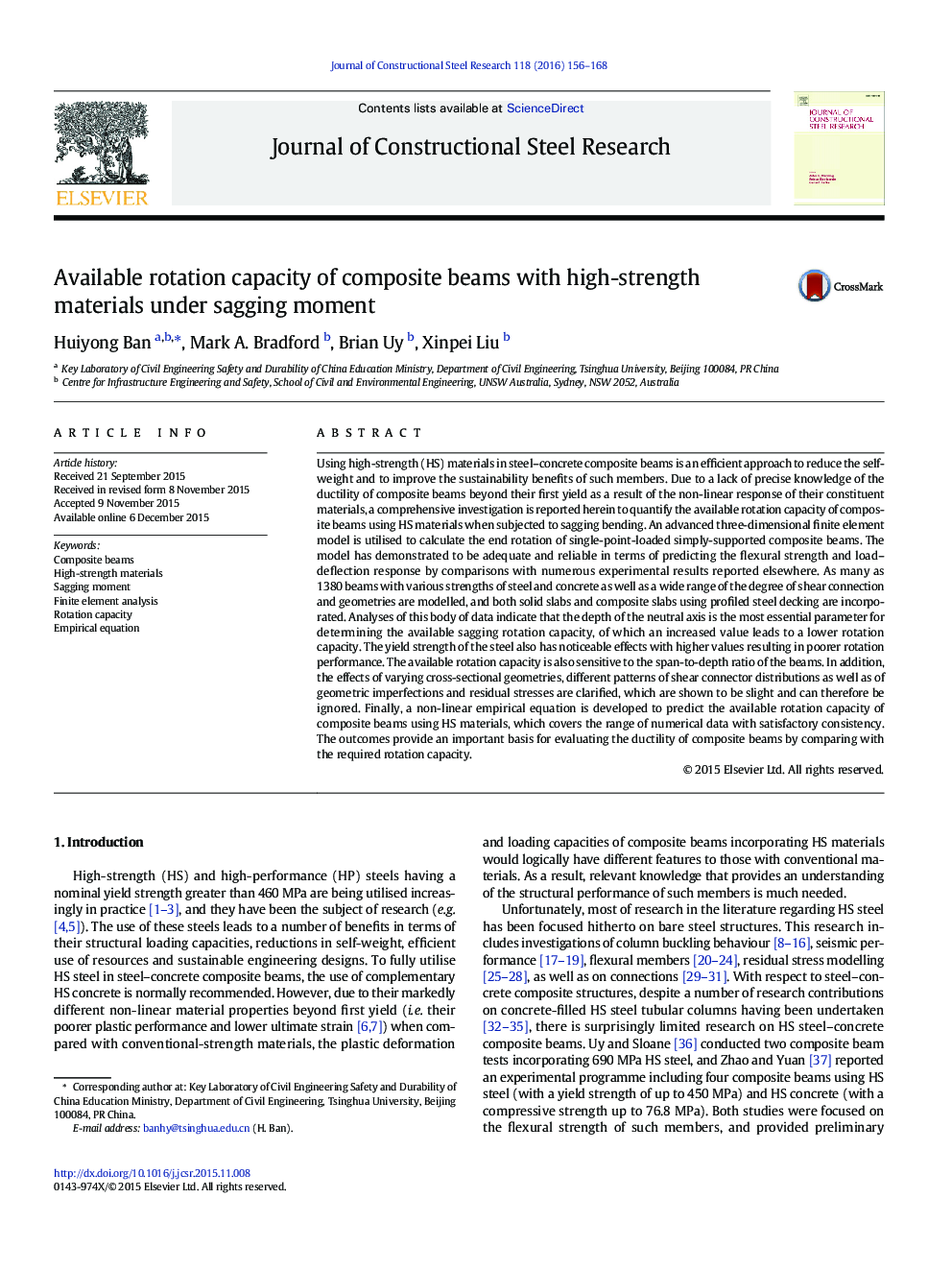| کد مقاله | کد نشریه | سال انتشار | مقاله انگلیسی | نسخه تمام متن |
|---|---|---|---|---|
| 284315 | 509138 | 2016 | 13 صفحه PDF | دانلود رایگان |
• An improved FE model is validated against 27 independent composite beam tests.
• Available rotation capacities of 1380 composite beams are calculated and analysed.
• Depth ratio of the plastic neutral axis and steel grade are most influential.
• Available rotation capacities are sensitive to span-to-depth ratios.
• An empirical equation is developed for predicting the rotation capacities.
Using high-strength (HS) materials in steel–concrete composite beams is an efficient approach to reduce the self-weight and to improve the sustainability benefits of such members. Due to a lack of precise knowledge of the ductility of composite beams beyond their first yield as a result of the non-linear response of their constituent materials, a comprehensive investigation is reported herein to quantify the available rotation capacity of composite beams using HS materials when subjected to sagging bending. An advanced three-dimensional finite element model is utilised to calculate the end rotation of single-point-loaded simply-supported composite beams. The model has demonstrated to be adequate and reliable in terms of predicting the flexural strength and load–deflection response by comparisons with numerous experimental results reported elsewhere. As many as 1380 beams with various strengths of steel and concrete as well as a wide range of the degree of shear connection and geometries are modelled, and both solid slabs and composite slabs using profiled steel decking are incorporated. Analyses of this body of data indicate that the depth of the neutral axis is the most essential parameter for determining the available sagging rotation capacity, of which an increased value leads to a lower rotation capacity. The yield strength of the steel also has noticeable effects with higher values resulting in poorer rotation performance. The available rotation capacity is also sensitive to the span-to-depth ratio of the beams. In addition, the effects of varying cross-sectional geometries, different patterns of shear connector distributions as well as of geometric imperfections and residual stresses are clarified, which are shown to be slight and can therefore be ignored. Finally, a non-linear empirical equation is developed to predict the available rotation capacity of composite beams using HS materials, which covers the range of numerical data with satisfactory consistency. The outcomes provide an important basis for evaluating the ductility of composite beams by comparing with the required rotation capacity.
Journal: Journal of Constructional Steel Research - Volume 118, March 2016, Pages 156–168
